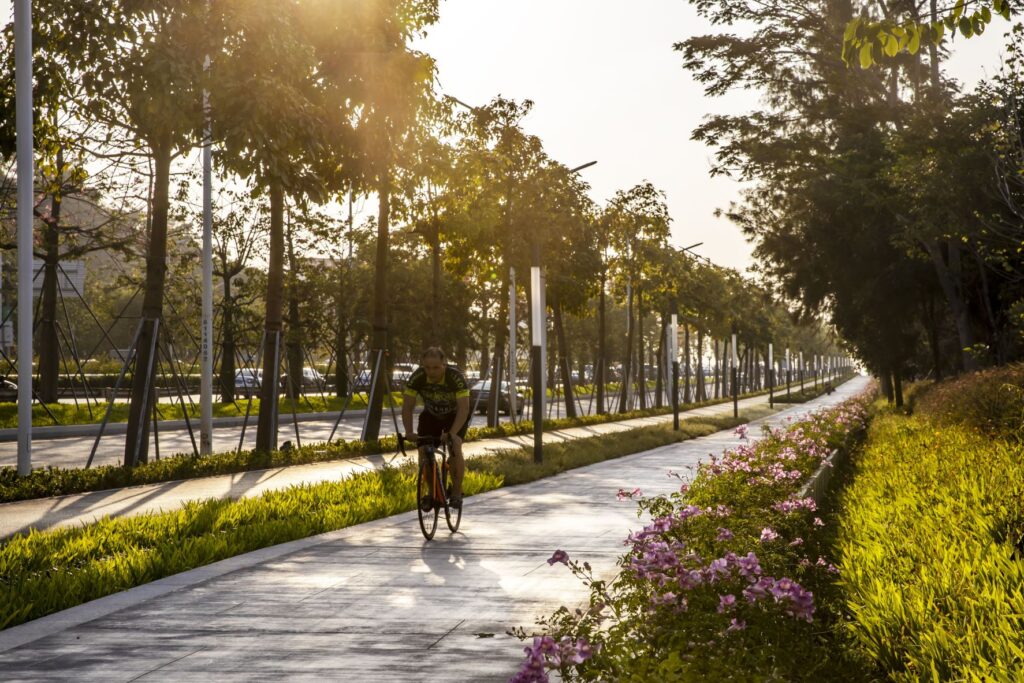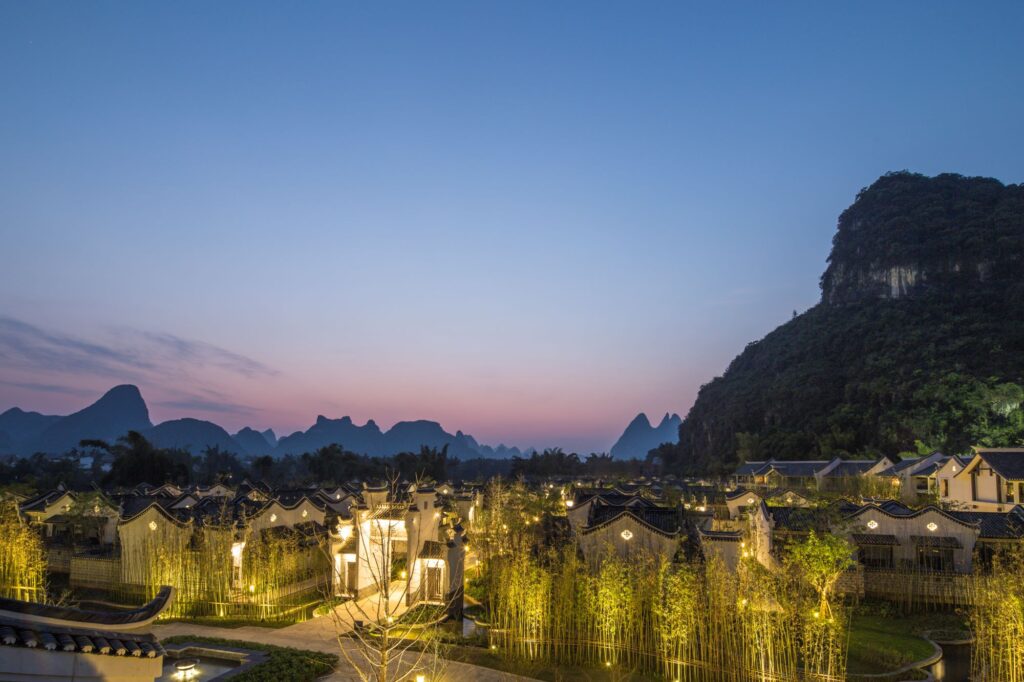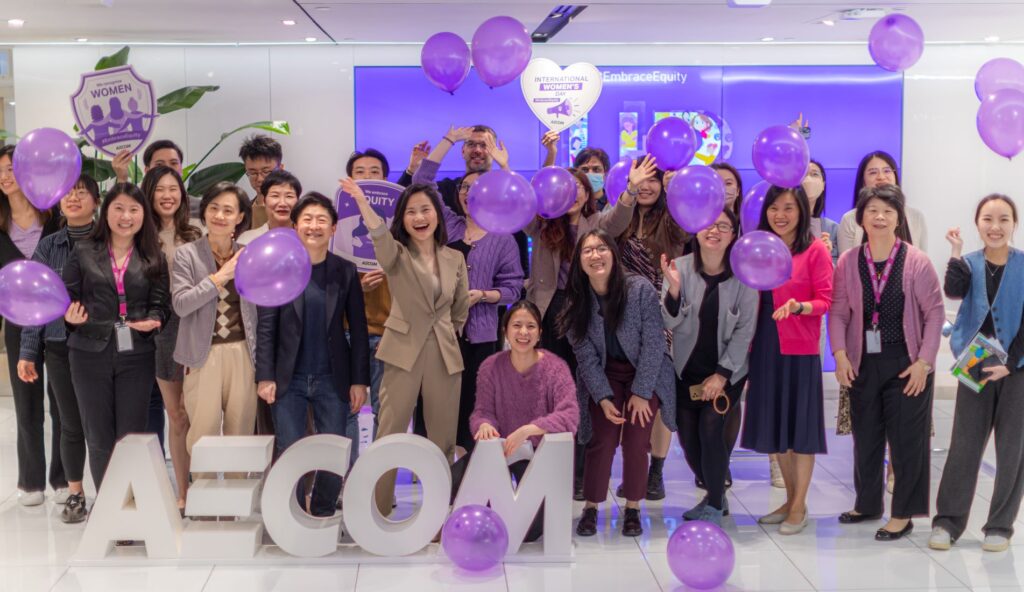People Spotlight: Meet Shirley Chen
Our People Spotlight series gives you an inside look at our technical experts around the world. This week, we are highlighting Shirley, a vice president leading AECOM’s Hong Kong Buildings + Places team, who is also the Hong Kong Urbanism + Planning lead and the digital innovation lead for our Asia Buildings + Places business and providing an insight into her inspiration and work.
Progressing her career at AECOM from landscape designer to vice president, Shirley has collaborated with premier real estate developers, governments, and numerous multinational hotel operators to drive and deliver projects.
She believes that beautiful landscapes create tremendous social value for the communities and people they serve. “It’s like art meets problem solving, and this is what motivates me to design,” she explains.
Shirley is a trailblazer of creative employee engagement initiatives in all the offices she has led and is keen to foster an ED&I culture, specially making women in highly technical fields more visible in the work they do. Nurturing team morale is a signature of her leadership, which has been recognized in the Stevie Awards for Women in Business, Titan Business Awards, and Titan Women in Business Awards. With nearly twenty years of experience across three AECOM offices in the region, Shirley is a portrait of agility and perseverance, demonstrating that a commitment to excellence in all things and empowering others can yield powerful results.
Tell us about what inspired you to join AECOM?
I joined AECOM legacy company EDAW right after graduation. I was inspired by the holistic design approach that the company advocated and implemented across their portfolio of projects — whether it was commercial development or public open space. I learned from some of the pioneer designers here in the Asia region who always told us to “listen to the site.” We dig deep into multiple aspects of the site to uncover the DNA for each project.
So, whenever I work on a project, my overall goals are to protect the environment, celebrate the heritage and promote the culture. I also appreciated the chemistry of a multi-cultural and diverse work environment, and having colleagues that expanded my worldview. Until today, this ED&I culture remains significant to me.
I was inspired by the holistic design approach that AECOM advocated and implemented across their portfolio of projects — whether it was commercial development or public open space.”
What is your favorite AECOM project that you’ve worked on and why?
There are many, but one that stands out is the Banyan Tree Yangshuo project in Guilin, China. This award-winning resort is by the Li River in a well-preserved ancient town with a scenic backdrop of karst hills. The hills, tranquility of the old villages, and local fan-making artisans were what drew visitors to this place, so we wanted our design to really highlight these aspects. Both our client and our team were keen on embedding sustainability in hospitality.
There was so much collaboration with other firms who took care of aspects such as architecture design, interior design and lighting. We took care of landscape design. Inspired by the rice terraces commonly found where the project is located, we made use of the terracing approach instead of tall retaining walls to resolve the level differences caused by the slopes of the mountain within the site.
This design approach not only created a distinct design feature that is in line with the region’s agricultural heritage, but it also brought environment benefits such as soil conservation by decreasing erosion and rapid surface run-off, and flood control by letting rainwater seep underground before it slowly flows out into large bodies of water. The design preserved much of the existing centuries-old phoenix bamboo along the river through well-coordinated orientation of the villas and platform levels.
Everything had to be in harmony without overpowering the local context, which helped it gain the EarthCheck certification for sustainable tourism.
Our design approach not only created a distinct design feature that is in line with the region’s agricultural heritage, but it also brought environment benefits such as soil conservation by decreasing erosion and rapid surface run-off, and flood control by letting rainwater seep underground before it slowly flows out into large bodies of water.”
Tell us a story of how your work positively impacted the community.
Landscapes are meant to create quality living environments for people and positively impact the world. Today, our collective mission is to promote lifestyles that achieve better environmental, social and governance (ESG) outcomes. Every project, regardless of scale, can showcase the power of innovative design to elevate places and revitalize communities.
The Shenzhen Bao’an International Airport Renewal is a milestone project for me as a project director. It’s not every day that one gets the opportunity to work on something as extensive as a major airport. Also, it is critical infrastructure in a city that is meaningful to my career. The project encompassed the airport site and surrounding areas. Besides planning for efficient access, our landscape design looked to reconnect the originally fragmented urban areas into an ecological system that regenerates the landscape.
Our approach created a new hierarchy of green infrastructure and open spaces linking function and experience. The design included better transit connectivity between the ferry, metro and bus. Phasing was considered to make room for the future aerotropolis. The design layered landscape textures and colors for the expressway and streetscapes. The Land Art Garden, which utilizes the undeveloped central landscape zone, envisions a conceptual link between the sky and the earth to display the vitality of Shenzhen. A ‘green runway’ can be seen from the air or experienced as a focal point while driving or walking by. It elevated the gateway to the city.
Going beyond the projects, I proactively collaborate with institutions such as ULI, AIA, and universities to promote our industry, whether this is inspiring the next generation of designers, leveraging our expertise for more innovation, sharing our design insights with the public, or mentoring young women leaders not only within AECOM but also externally. I am currently a mentor for The Women’s Foundation here in Hong Kong.
The Shenzhen Bao’an International Airport Renewal is a milestone project for me as a project director. It’s not every day that one gets the opportunity to work on something as extensive as a major airport. Besides planning for efficient access, our landscape design looked to reconnect the originally fragmented urban areas into an ecological system that regenerates the landscape.”
Share a piece of career advice.
Explore every possibility and embrace the unknown. I have faced so many unknowns in my career from challenging projects, meticulous clients, fierce market competition, bigger responsibilities, and more. Challenges hold opportunities for success. It is easy to just say ‘no’ and remain where you are, especially when you feel like certain issues are out of your league. However, stepping out of the comfort zone is full of lessons as well as surprises. Never stop learning.









